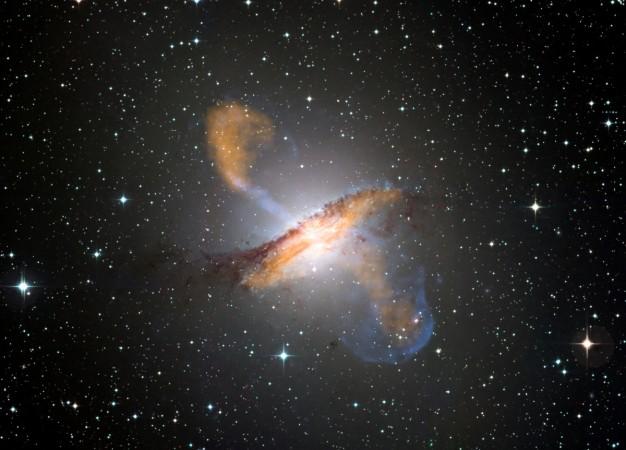
Astronomers have uncovered a secret of Centaurus A, a galaxy located about 13 million light years away from Earth. According to them, a plane of dwarf galaxies has been found orbiting around it similar to how planets do around their stars. This discovery challenges a long-held theory about how these dwarf galaxies are spread around the cosmos.
Astronomers had previously observed planes of dwarf galaxies whirling around both the Milky Way and Andromeda galaxies. It was believed that these tiny galaxies hang around the larger galaxies in all directions like bees swarming around a hive. However, that's not the case, according to the latest findings, published in the journal Science on Friday.
"Cold dark matter theory made astronomers believe that the best studied galaxies in the Universe - the Milky Way and Andromeda - are the odd ones out," Helmut Jerjen from the Australian National University Research School of Astronomy and Astrophysics said in a statement. "It seems that our Milky Way and Andromeda are normal galaxies after all, and spinning pancake-like systems of satellite galaxies are more common than scientists expected."
The dwarf galaxies are distributed in planes that are almost perpendicular to the disks of the Milky Way, Andromeda and Centaurus A, Jerjen said, adding that the phenomenon of these small galaxies revolving in one direction around host galaxies is hard to explain.
Unlike spiral galaxies like Milky Way and Andromeda, Centaurus A has both elliptical and spiral features. Since it's one of the closest radio galaxies to Earth -- the fifth brightest in the sky – astronomers have extensively studied its active galactic nucleus.
Centaurus A and most other large galaxies in the universe are believed to have had a close encounter or merged with another galaxy at least once in their lifetime, resulting in the orbiting dwarf galaxies.
"Co-rotating dwarf galaxy systems could have formed during such interactions. In this scenario dwarf galaxies should be devoid of dark matter," Oliver Müller from the University of Basel in Switzerland, who collaborated with Jerjen for the research, said in the statement.
Like Centaurus A, the Milky Way also has tiny satellite galaxies around it called the Magellanic Clouds that are visible to the naked eye from the southern hemisphere.
"Scientists have identified close to 50 dwarf galaxy candidates around the Milky Way - most of them are aligned in a plane orbiting the centre of the host galaxy," Jerjen said. "Most of the dwarf galaxy candidates that my colleagues and I observed around Centaurus A are arranged this way, and it's a similar case with at least half of them around Andromeda."















